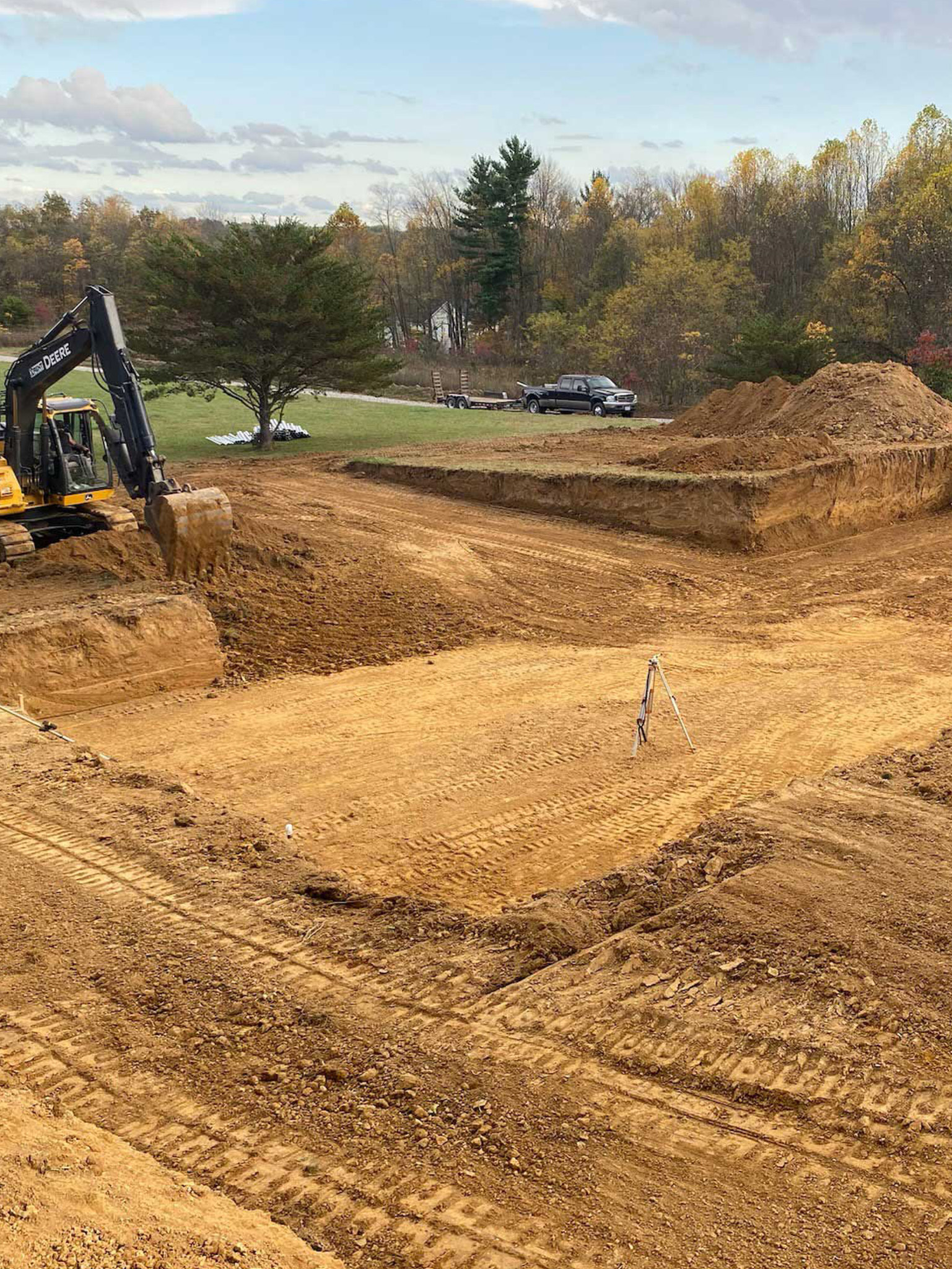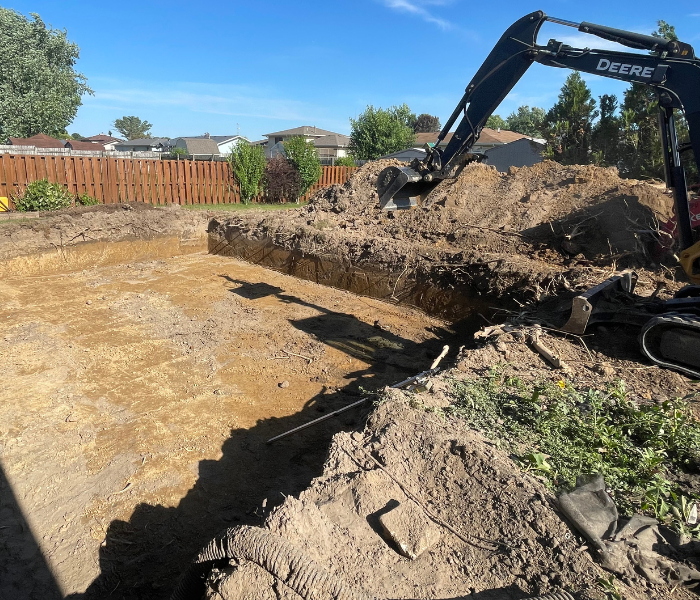Lancaster Excavation - Specialist Excavation Services in Lancaster, OH
Lancaster Excavation - Specialist Excavation Services in Lancaster, OH
Blog Article
Extensive Exploration: The Science Behind Superior Excavation Practices
The world of excavation methods is a domain where scientific research links with craftsmanship to discover the secrets concealed below the earth's surface area. From ancient hand devices to contemporary hydraulic excavators, the development of excavation methods has actually been a testament to human ingenuity and technological advancements. What genuinely sets remarkable excavation techniques apart is a deep understanding of geological concepts, combined with the usage of cutting-edge tools and techniques. By exploring the scientific research behind these methods, we can uncover the keys that lie under our feet and appreciate the precision and competence that go into every dig.
Development of Excavation Methods
Throughout history, the advancement of excavation methods has played a critical function ahead of time construction practices and archaeological explorations. From the simple tools utilized by our forefathers to the innovative equipment utilized in modern times, the progression of excavation techniques has actually considerably transformed exactly how we approach different projects.
In ancient times, manual work with basic tools such as wheelbarrows, shovels, and pickaxes was the key approach of excavation. This labor-intensive process restricted the depth and scope of excavations, typically leading to slow-moving progress and limited accessibility to particular sites. Nonetheless, as human beings progressed, so did the devices and methods made use of for excavation.
The Industrial Transformation marked a transforming point in excavation experiment the intro of steam-powered machinery. This innovation revolutionized the area, permitting faster and much more extensive excavations. In contemporary times, technology plays an essential function in excavation, with advancements like general practitioner systems, drones, and 3D scanning improving precision and performance in the field. The advancement of excavation strategies remains to form the way we build, check out, and comprehend the world around us.
Role of Technology in Excavation

The integration of cutting-edge modern technology has actually basically transformed the area of excavation, enhancing accuracy and effectiveness to unmatched degrees - lancaster trenching. One of the vital technological innovations that has actually dramatically affected excavation practices is the use of GPS systems.
In addition, the arrival of 3D modeling and simulation software has streamlined the preparation process for excavation tasks. Engineers and drivers can currently imagine the whole excavation process prior to damaging ground, maximizing and recognizing possible difficulties process. Together with this, the implementation of drones in excavation activities has actually assisted in aerial studies, volumetric dimensions, and website evaluations with unequaled speed and accuracy.
Geological Principles in Excavation
An understanding of geological concepts is important for making sure the structural stability and stability of excavation sites. Geological factors play an essential function in determining the usefulness and safety and security of excavation projects (lancaster excavation). One key geological concept to think about is the type of dirt or directory rock existing at the website. Different soil types, such as clay, sand, or gravel, have varying degrees of security and call for various excavation strategies. Cohesive dirts like clay might require extra assistance to prevent collapses, while sandy dirts might be vulnerable to erosion throughout excavation.
Additionally, the geological framework of the area, including faults, fractures, and rock developments, should be very carefully evaluated to recognize prospective dangers and obstacles. Excavating near mistake lines or unstable rock formations can lead to instability and possible dangers. By conducting thorough geological surveys and analysis, excavators and engineers can establish strategies to alleviate risks and make certain the effective conclusion of excavation jobs. Eventually, including geological principles right into excavation techniques is vital for attaining risk-free, reliable, and sustainable results.

Most Current Tools for Excavation
In the realm of excavation techniques, modern technologies in devices have actually changed the performance and precision of excavation procedures. These drones can provide in-depth aerial surveys of excavation websites, supplying real-time information on topography and possible risks.
Another cutting-edge device gaining popularity is the execution of 3D printing modern technology for developing personalized excavation devices. This enables the manufacturing of specialized tools that are tailored to the certain requirements of a project, enhancing performance and decreasing downtime.
Moreover, innovations in materials scientific research have actually led to the development of stronger and much more sturdy excavation tools. septic ohio. Tungsten carbide-tipped excavator attachments, for instance, offer superior efficiency in tough ground problems, improving efficiency on-site
Scientific research's Influence on Excavation Practices

Furthermore, scientific research on soil auto mechanics and geotechnical engineering has given valuable insights right into dirt actions, permitting excavation professionals to make enlightened choices relating to excavation techniques and soil stablizing techniques. Generally, scientific research continues to drive development and renovation in excavation practices, making excavation jobs a lot more effective, cost-efficient, and sustainable.

Final Thought
To conclude, the advancement of excavation techniques has actually been significantly affected by improvements in modern technology and a deeper understanding of geological concepts. The current devices and equipment made use of in excavation have actually boosted effectiveness and precision in the field. The application of clinical expertise has actually dramatically enhanced excavation methods, leading to more lasting and efficient methods for excavating various kinds of materials.
In the world of excavation methods, contemporary technologies in tools have actually changed the efficiency and accuracy of excavation useful content procedures. By leveraging scientific principles, the excavation market has actually been able to considerably improve efficiency, precision, and security in excavation processes. GPR allows excavation teams to non-invasively check and map subsurface frameworks, utilities, and potential hazards, enabling them to intend excavation projects with better accuracy and lowered risk of accidents.
Furthermore, clinical research study on soil auto mechanics and geotechnical design has provided valuable understandings into dirt habits, enabling excavation professionals to make informed decisions relating to excavation approaches and dirt stablizing techniques. In general, science proceeds to drive technology and enhancement in excavation methods, making excavation tasks extra efficient, cost-efficient, and lasting.
Report this page